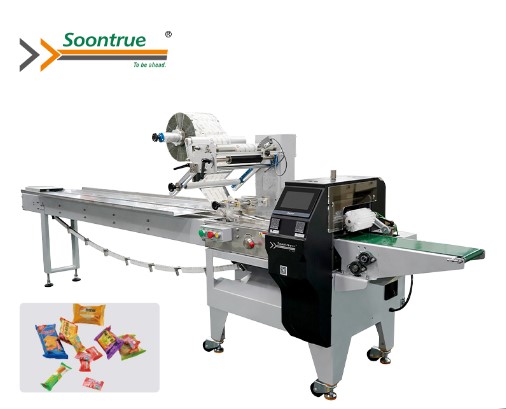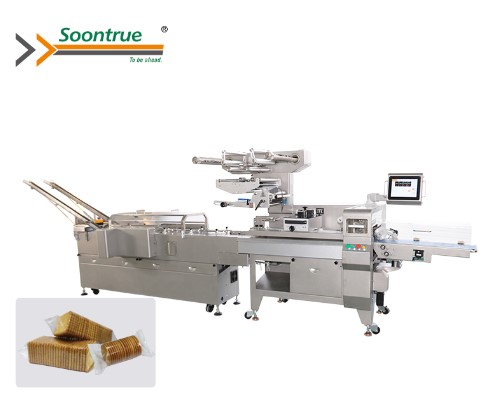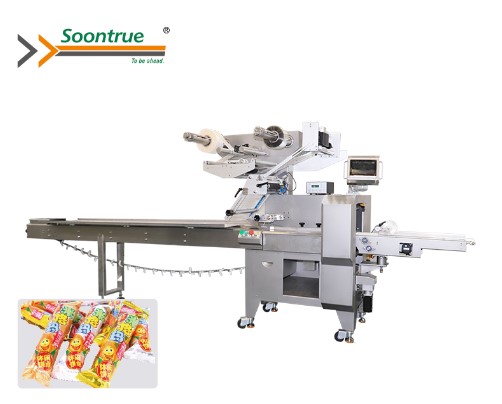Overwrap Vs Flow Packing Machine: What Is The Difference?
Overwrapping and flow packing are two widely used packaging processes. Both play important roles in product packaging, although their procedures and uses are vastly different. Understanding the differences between these two methods is crucial for businesses seeking the most suitable packaging solution for their products. Keep reading this post and delve into the distinctions between overwrapping and flow packing machines.
Overwrapping Machines
Overwrapping machines, often called cellophane wrapping machines, are a flexible packaging solution used in a variety of sectors. They excel in providing a sleek, professional finish to individual or bundled products. Here's a deeper look at the key features of overwrapping machines:
Versatility: One of the key benefits of overwrapping machines is their capacity to handle various items. Whether it's boxes, trays, blister packs, or irregularly shaped items, overwrapping machines can accommodate various shapes and sizes, making them ideal for businesses with a wide product portfolio.
Enhanced Presentation: Overwrapping offers unparalleled product visibility, allowing consumers to see the contents of the package. This openness is especially useful in retail contexts where the visual attractiveness of the goods influences purchase decisions. Additionally, the tight, neatly folded wrap enhances the presentation, making products more attractive on store shelves.
Tamper Resistance: Overwrapping creates an excellent tamper-evident seal, protecting the product's integrity from manufacturing to consumption. This feature is crucial for industries such as pharmaceuticals and food, where product safety and authenticity are paramount. Overwrapping increases customer trust and confidence in the goods by clearly showing any tampering efforts.
Customization: Overwrapping films can be customized with branding elements, logos, and promotional messages. This level of customization not only reinforces brand identity but also serves as a marketing tool to capture consumer attention. Businesses may use printed films to communicate critical information, promotions, or product characteristics directly on their packaging, increasing brand awareness and recognition.
Flow Packing Machines
Flow packing machines, also known as horizontal form fill seal (HFFS) machines or pillow packing machines, provide a fast and effective packaging option for a variety of items. They excel in creating sealed packages with a consistent appearance and dimensions. Here are the key features of flow packing machines:
High Speed: Flow packing machines are well-known for their high-speed packaging capabilities, making them useful in businesses with high-volume production needs. With rapid forming, filling, and sealing processes, these machines can significantly increase throughput and operational efficiency, minimizing production downtime and meeting tight deadlines.
Efficient Material Usage: Flow packing machines optimize material usage by forming packages around the product, thereby reducing waste and lowering packaging costs. By reducing unnecessary material and employing accurate sealing processes, these devices help to promote sustainability while increasing corporate profitability.
Sealed Protection: Flow packing creates a hermetically sealed barrier around the product, safeguarding it against external contaminants, moisture, and tampering. This degree of protection is especially important for perishable commodities, sensitive electronics, and pharmaceutical products since it preserves product integrity and extends shelf life.
Uniform Packaging: Flow packaging machines maintain consistent package look and proportions, which improves product presentation and shelf appeal. Consistent packaging improves brand image and simplifies inventory management and distribution processes, streamlining logistics and reducing operational complexities.
Distinguishing Factors
While both overwrapping and flow packing machines serve the purpose of packaging goods, several factors differentiate them:
Packaging Style: Overwrapping provides a tight, folded box around the goods, whereas flow packing results in a sealed container with surplus material at the ends.
Product Compatibility: Overwrapping is suitable for individual items or small bundles, whereas flow packing is more suitable for continuous, uniform products.
Speed and Efficiency: Flow packing machines generally offer higher packaging speeds and efficiency compared to overwrapping machines.
Material Usage: Overwrapping may require more packaging material compared to flow packing, which maximizes material consumption by creating packets around the product.
Conclusion
The choice between overwrapping and flow packing machines depends on factors such as the type of product, desired packaging style, production volume, and efficiency requirements.Businesses that understand the distinctions between these two technologies may make more educated judgments about their packaging need. Soontrue is a professional packing machine supplier, specializing in a variety of packing machines including flow packing machines. Please feel free to visit our site today to learn more about what we offer.





